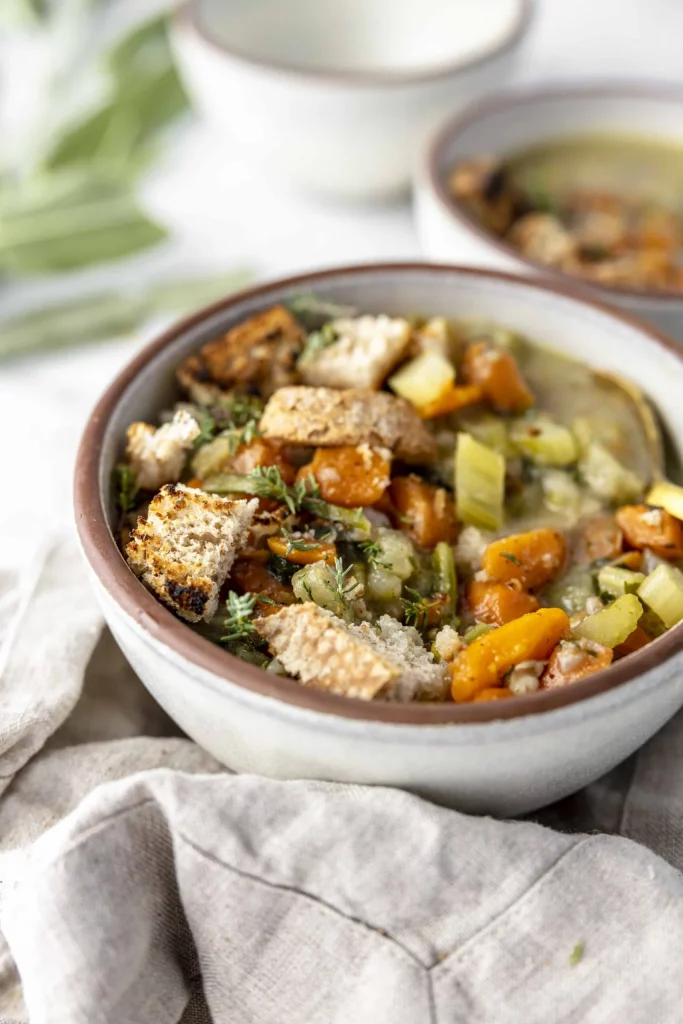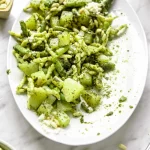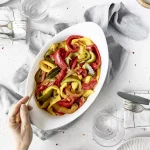I have just had a bowl of this unbelievably hearty ribollita soup from Tuscany. Ribollita means “reboiled,” which it actually is.
A typical hot winter soup, it is commonly composed of a mix of vegetables (lacinto or dinosaur kale, Savory cabbage, beans, celery, and carrots) along with stale crusty bread: all ingredients from our humble peasant kitchens. These two words describe it perfectly: simple & delicious.
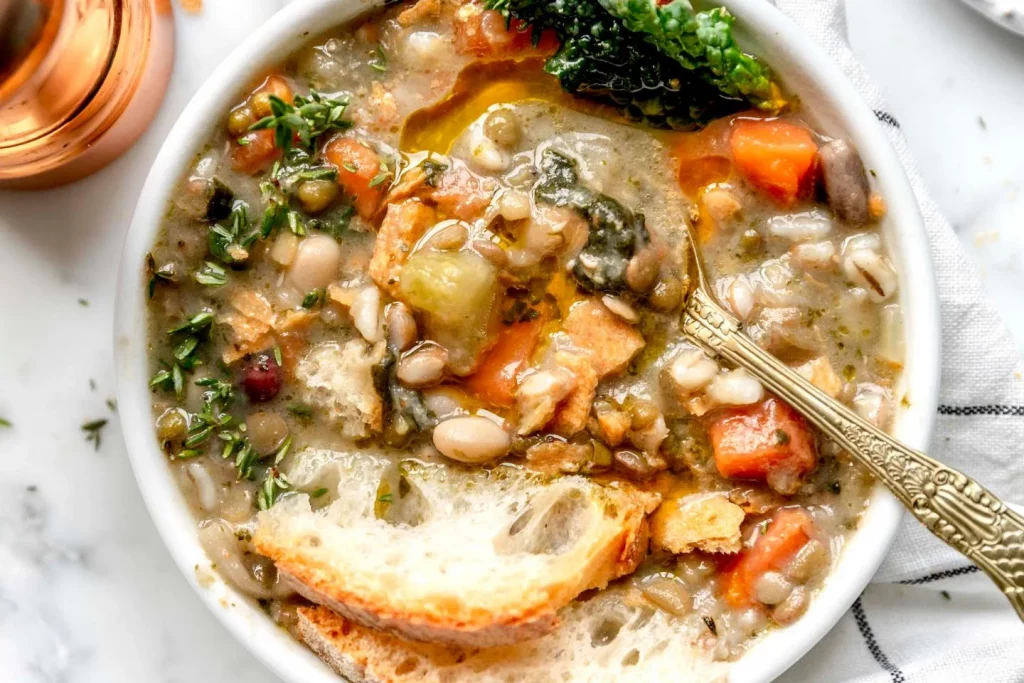
Is it eaten only in Italy? Not at all! The ingredients are easy to find everywhere, and a few suggestions will help you to make it in your own house. First, the vegetables are simmered over low heat; then some stale crusty bread is added, and the soup is cooked again. The more it is cooked, the tastier it gets.
According to the legend, this recipe dates back to the Middle Ages when noble people had their meal in big rolls called mense in Italian. When they finished their meal, they gave the leftovers of the bread to their servants who combined it with some simple vegetables and boiled everything: the result was a nutritious and tasty soup.
I have encountered plenty of “official” recipes, sometimes very different ones. This is Italy where every region, every city, and every family has their own recipes, methods, variations, all of which are delicious. Ribollita has a registered and notarized recipe at the Accademia Italiana della Cucina. This means that this “official” recipe along with all its variations are authentic.
So let’s focus on the ingredients and the methods, which are very important just as they are with all Italian recipes. We have to prepare, cook and serve the food properly. Since this soup is made with leftover ingredients, you can add winter vegetables you have in your fridge. Combine them to make your own ribollita.
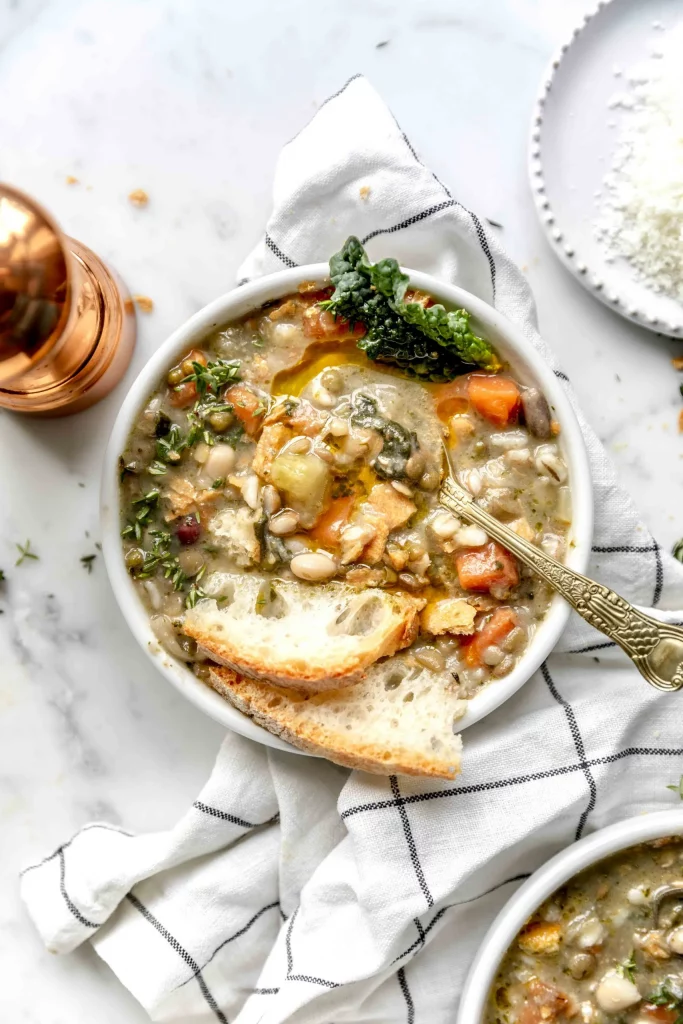
The essential ingredients:
- Black cabbage, commonly known as lacinto or dinosaur kale in the US, is the main ingredient in the recipe because it gives the soup a rich (slightly spicy) strong taste. It is a winter vegetable with curly leaves. Cut out and discard the tough central vein.
- Bread: the best one is saltless, typical from Tuscany where it is called sciocco or silly bread with very little salt because it provides a genuine taste. Choose very stale bread with a thick, crispy crust. Stale ciabattas would work well.
- Cannellini beans are the best choice because their taste is quite delicate and they don’t prevail over the other ingredients. If using dry, discard any pale beans; put them into a bowl and soak for about 12 hours or overnight in plenty of cold water. After soaking, drain, rinse, and boil them in water with some rosemary or sage as the use of herbs reduces gut fermentation. You can also use canned beans.
The basics of the recipe
- Be patient and allow yourself plenty of time: there are no fast methods;
- Prepare the sautéed vegetables carefully: if the onion gets too brown, the soup will taste bitter;
- The original ribollita recipe calls for black cabbage or what is lacinto or dinosaur kale in the US.
- Blend the beans to make your soup creamier;
- Add the salt at the end of the recipe,; otherwise, the beans will get too tough;
- Add extra virgin olive oil at the end of the cooking process;
- Do not add any stock cubes or other seasonings; this soup develops its own rich taste;
- Do not add pasta or rice because the bread provides the right serving of carbs in the recipe.
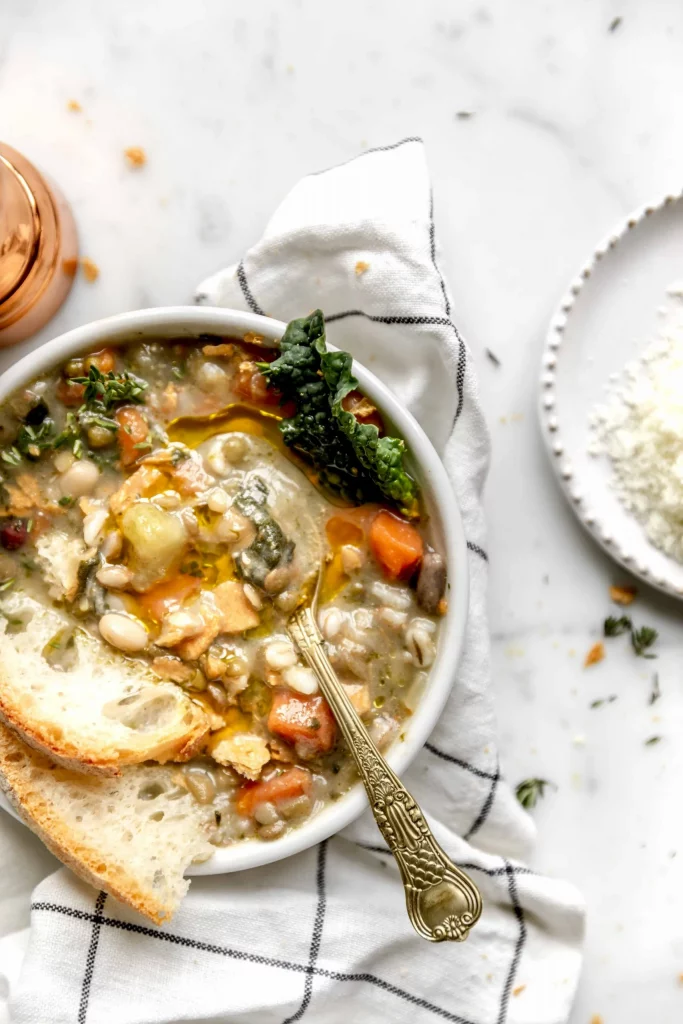
What’s the soup like?
Nothing says winter like this rich soup. The texture is soft and warm and the beans will literally melt in your mouth.
Italian Ribollita soup- an enchanting recipe: black cabbage, plenty of vegetables, bread and cannellini beans
Ingredients
- 2 cups of dry cannellini beans or 780g of canned ones (3 cans) (400g)
- 3 cups of stale bread with thick crust (300g)
- 4 cups of black cabbage or lacinto or dinosaur kale (400g)
- 4 cups of Savoy cabbage
- 2 cups of chard
- 2 small potatoes
- 1 small can (227g) of peeled plum tomatoes
- 2 small onions
- 2 carrots
- 2 stalks of celery
- About 2 liters of vegetable broth or hot water
- Extra virgin olive oil (about 5-6 tablespoons)
- Salt and pepper
- Extra: rosemary (for boiling the beans), fresh thyme, red pepper flakes (added at the end)
Instructions
- On the previous day, soak the beans in plenty of water for at least 12 hours or overnight; one day would be better as they get easier to digest.
- Once tender, drain the beans;
- In a pot, heat a little oil with a sprig of rosemary, add the beans, and cover with water;
- Put a lid on and cook over a medium-low heat for about 1 hour. They are done when you can easily smash them with a fork; if they still seem to be tough, cook them for another 10-15 minutes;
- Add some salt and remove the rosemary;
- Take half of the beans, and set aside the other half (which will be added whole at the end of the recipe) with the cooking liquid;
- Blend half of the beans with an immersion blender to make a kind of broth to cook the soup in. According to the original recipe, you should smash the beans in their cooking liquid;
- Add a ladle of cooking liquid to make the beans softer and more liquidy (if you haven’t saved the cooking water add a ladle of water);
- If you are using canned beans, skip the previous steps: your recipe starts here,
- Peel and finely slice the onion, dice the carrots and the celery;
- Sauté the vegetables in a big stockpot with 3-4 spoons of extra virgin olive oil for 1 minute;
- Peel and cut the potato into small cubes;
- Add the potato cubes to the vegetables and cook for a few minutes;
- Add the thyme to taste. If using fresh, tie it with some kitchen twine so you can remove it more easily;
- Add the tomatoes; smash them with a fork and combine well;
- Clean, wash and slice the Savoy cabbage, the lacinto kale, the chard, and add them to the pot;
- Bring the soup to a rolling boil, remove the lid, and cook for 45 minutes, stirring occasionally;
- Add the cooking liquid from the beans or the hot vegetable broth;
- When the soup is almost ready (it is thicker and the vegetables are tender) season with salt and pepper;
- Add the whole beans;
- Cover it with more hot broth and simmer for 30-40 minutes;
- Season with salt and pepper to taste;
- Let the vegetable soup sit for a while;
- Take a big soup pot and place some coarsely cut bread onto the bottom of the pot, then pour in half of the soup; place other pieces of bread and cover them with the remaining soup;
- Put a lid on and set aside to rest (from 2 hours until the following day). Let it cool down at room temperature and then refrigerate;
- Take the soup out of the fridge: the bread has soaked up the liquid and the ribollita looks semi-solid;
- Add a couple of ladles of broth and heat it up for 10 minutes;
- You may add some red pepper flakes or fresh thyme leaves;
- Season with a little extra virgin olive oil;
- The ribollita should be eaten very hot;
- Don’t forget to share it with those you love on a gloomy winter day.
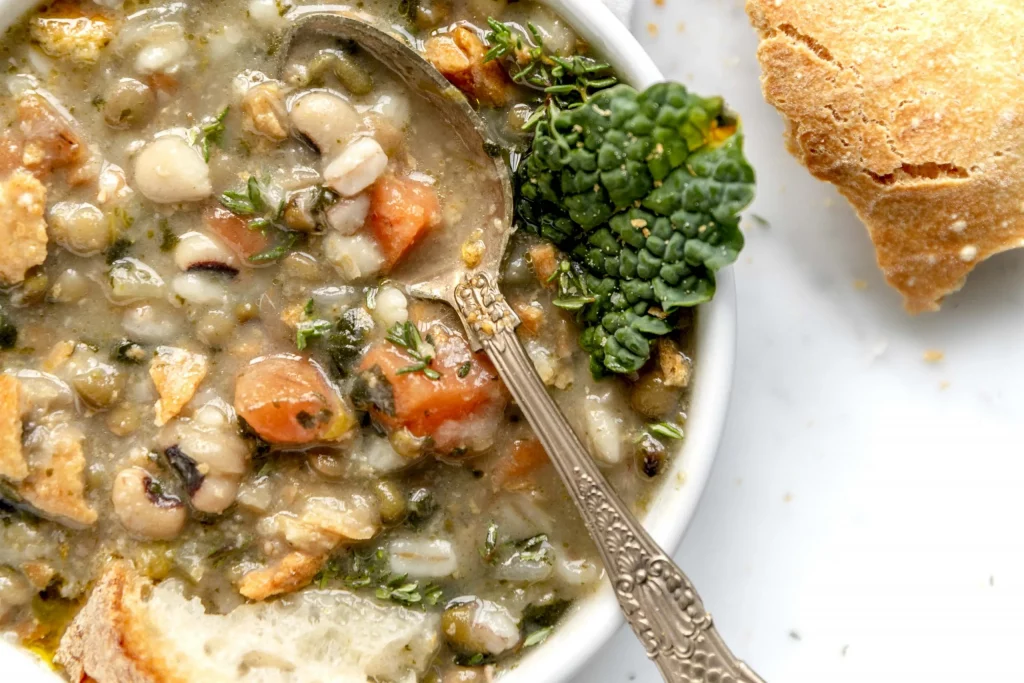
Non-official variations
I have found an unregistered recipe of ribollita in an old cookbook: the method is the same, but a few ingredients differ. Try it, and you’ll enjoy a second version of ribollita, a hearty one as well.
You’ll need:
- 1 cup (200g) of cannellini beans + 1 cup (200g) of borlotti beans
- 2 cups (300g) of chard, 4 cups (400g) of lacinto or dinosaur kale, 1½ cups (150g) of Savoy cabbage and 1½ cups (150g) of spinach.
Use carrots, onions, celery, potatoes as in the original recipe, but replace the thyme with fresh sage when you boil the beans.
For a stronger flavor, use 3 tablespoons of tomato paste along with the peeled plum tomatoes.
Follow the same method of the traditional recipe, and choose the one you like the best.
What can you do with leftover ribollita?
Refrigerate ribollita up to 2 days; you may also freeze it. Divide it into single serving containers, but do not add bread. Assemble the soup right before serving it.

